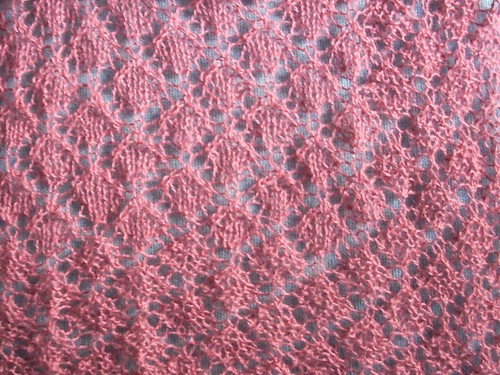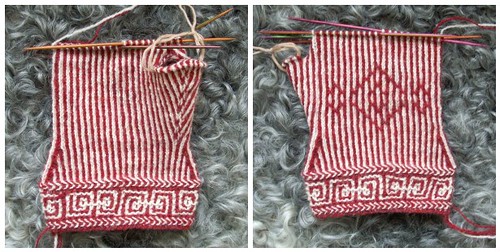Original design: four outer borders knitted separately with their corners sewn together.
Modified version: stitches for outer borders picked up around the centre section and knitted in the round to avoid seams.
Original design: all garter stitch.
Modified version: a combination of garter stitch and stocking stitch, partly for variation, partly to show and compare the difference in a single garment. (I'm bringing this project to Saturday's lace knitting workshop at GarnGalleriet.)
Encouraged by all the positive comments on my previous post I returned to Litet nystan to add even more to my stash of Shetlandsuld. Thank you! :-)
Ron and Francesca asked about Shetlandsuld, how it compares to Jamieson & Smith and Isager's Tvinni. I have actually never worked with J & S, so I don't know. I'd say Shetlandsuld is slightly rough to work with (which I like - not very fond of slippery yarns) but a lot softer after washing and blocking. It is quite similar to Tvinni, but thicker.
Ron also asked about the picot edge. First, I knit a few rows of stocking stitch; next a "knit two together, yarn over" row (even number of stitches); a few more rows of stocking stitch.
It is possible to fold and sew it in place, but I prefer knitting it in place through the cast-on loops: not only does it look neater to me, but it is also over and done with. I knit through every second loop, the ones about the yarn-over holes - I have found that doing so accentuates the points.
 |
| knitting the picot edge in place |





